This post may contain affiliate links. Please read our policy page.
When organizing library materials, I’ve found that utilizing natural fibers like jute, cotton, and bamboo provides effective storage solutions. Jute’s durability makes it ideal for baskets, while cotton organizers offer versatility for categorizing items. Bamboo shelving is both strong and eco-friendly, elevating the visual appeal. Plus, you can create fabric bins for added organization. The right approach not only protects my collections but also enhances the library environment—there’s much more to explore about these options.
The Benefits of Using Natural Fibers for Library Storage
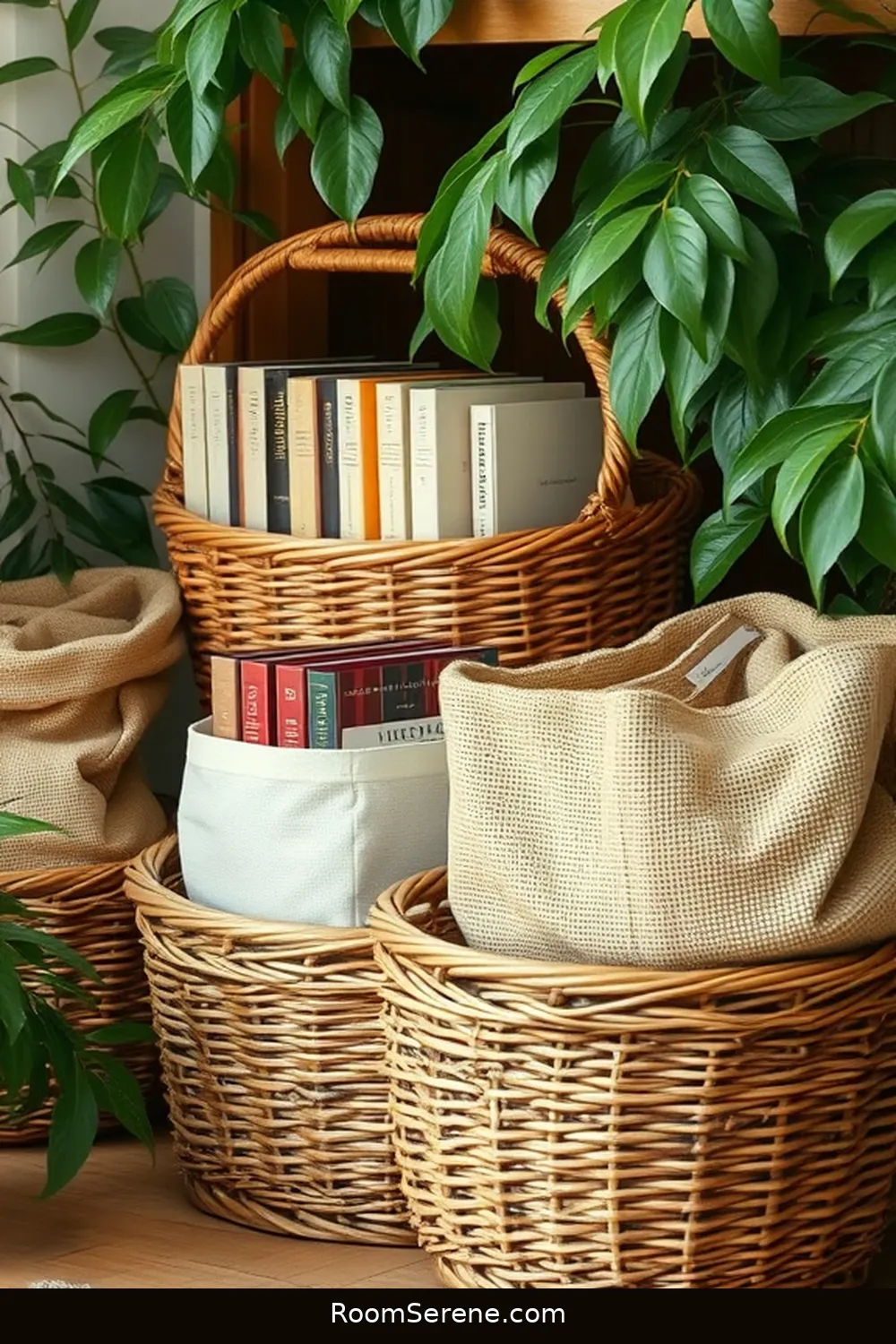
While many might overlook the materials used for storage, I believe that opting for natural fibers can greatly enhance how we preserve library materials.
Natural fibers, such as cotton and linen, are breathable, allowing moisture to escape and reducing the risk of mold and mildew. This ventilation is essential for maintaining the integrity of books and documents over time.
Natural fibers like cotton and linen promote breathability, crucial for preventing moisture-related damage to books and documents.
Furthermore, these materials are biodegradable, offering an eco-friendly alternative to synthetic options. Their inherent softness prevents scratching or damage to delicate pages, ensuring our valuable collections stay intact.
In addition, natural fibers can regulate temperature, providing a stable environment that further protects library materials.
Jute Storage Solutions: Durability Meets Style
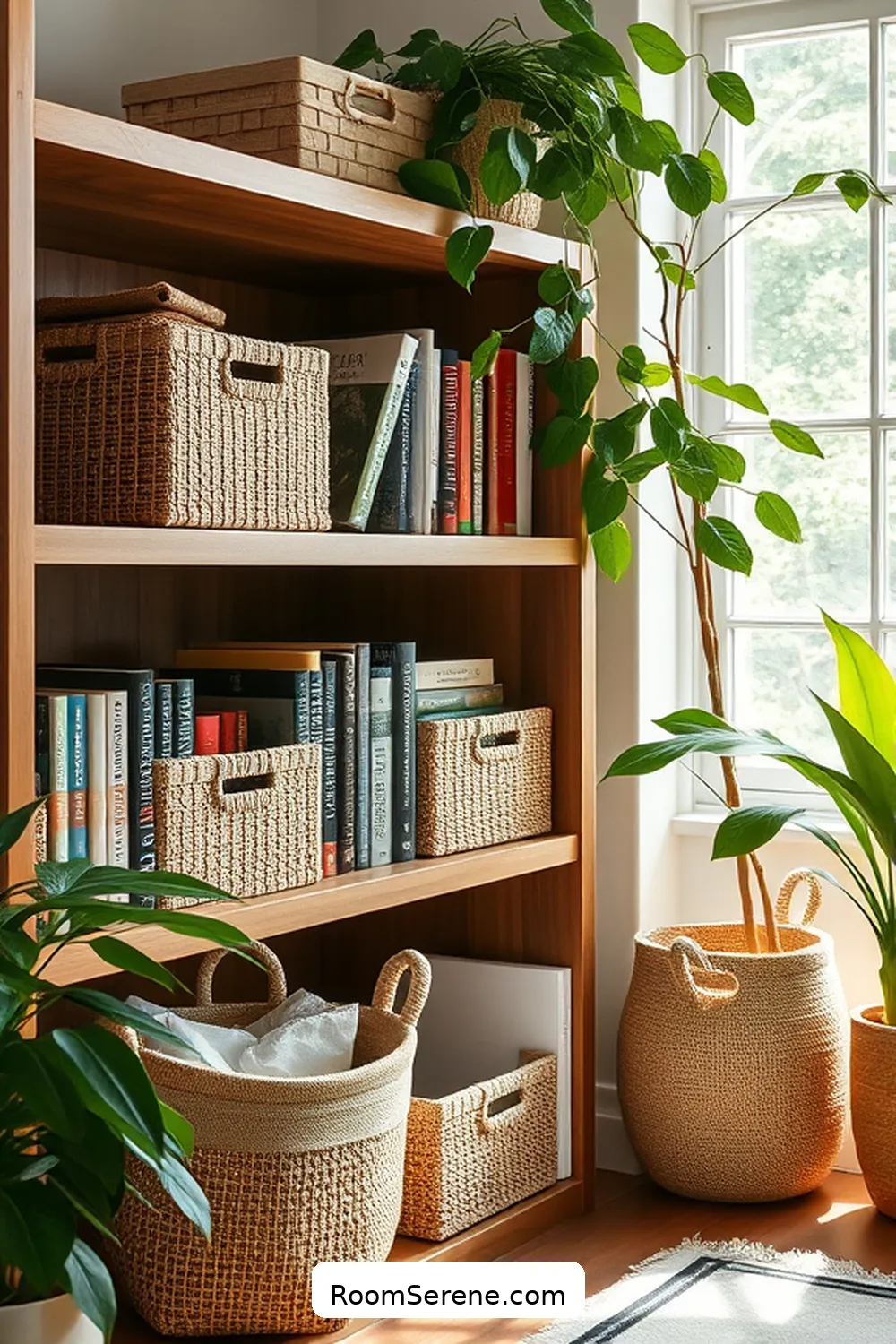
When it comes to storage solutions, jute stands out as a remarkable option that combines durability with aesthetic appeal. I’ve found that jute is incredibly strong, making it ideal for holding heavier library materials without fear of wear and tear.
Its natural fibers give it a rustic charm, which can enhance the visual appeal of any space. Plus, jute is breathable, preventing moisture buildup and protecting books and documents.
I appreciate how versatile jute storage options are; from baskets to bins, they fit seamlessly into various decor styles. They’re also relatively lightweight, making them easy to move around as needed.
Recommended Items
Explore our top picks for organizing your library materials with natural fibers—let’s get started!
Cotton Organizers: Versatile and Eco-Friendly Options
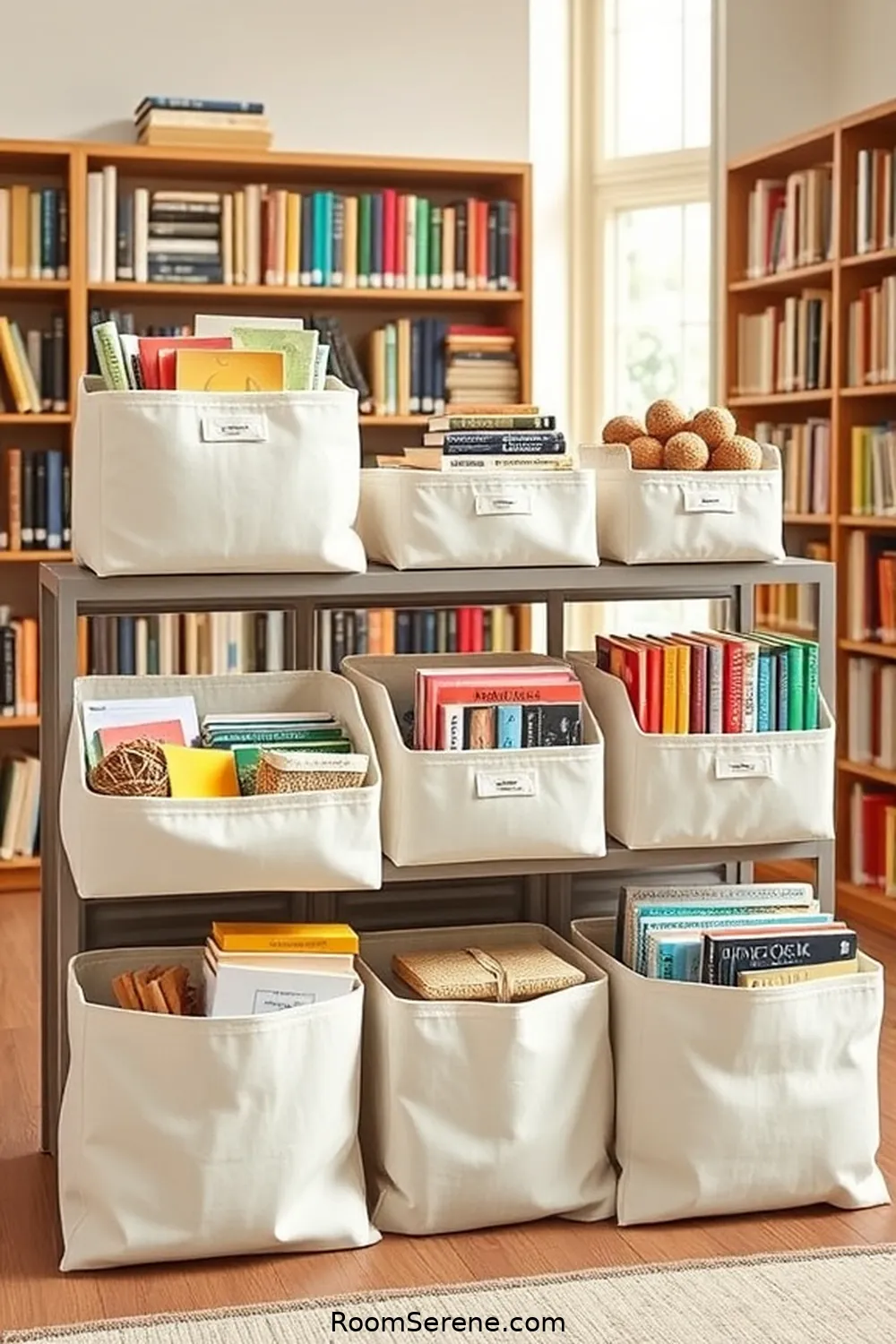
Cotton organizers are a fantastic choice for anyone seeking versatile and eco-friendly storage solutions for library materials. I’ve found them to be incredibly adaptable, perfect for categorizing books, magazines, and other resources.
Their breathable fabric prevents moisture buildup, which is vital for preserving delicate materials. Plus, they come in various sizes and designs, allowing easy integration into different spaces.
I appreciate that cotton is biodegradable, making it a sustainable option for those of us committed to reducing our environmental footprint. The ease of cleaning is another advantage; a simple wash can refresh them, ensuring they always look neat.
Task Overview for Library Organization
Bamboo Shelving: A Sustainable Way to Display Materials
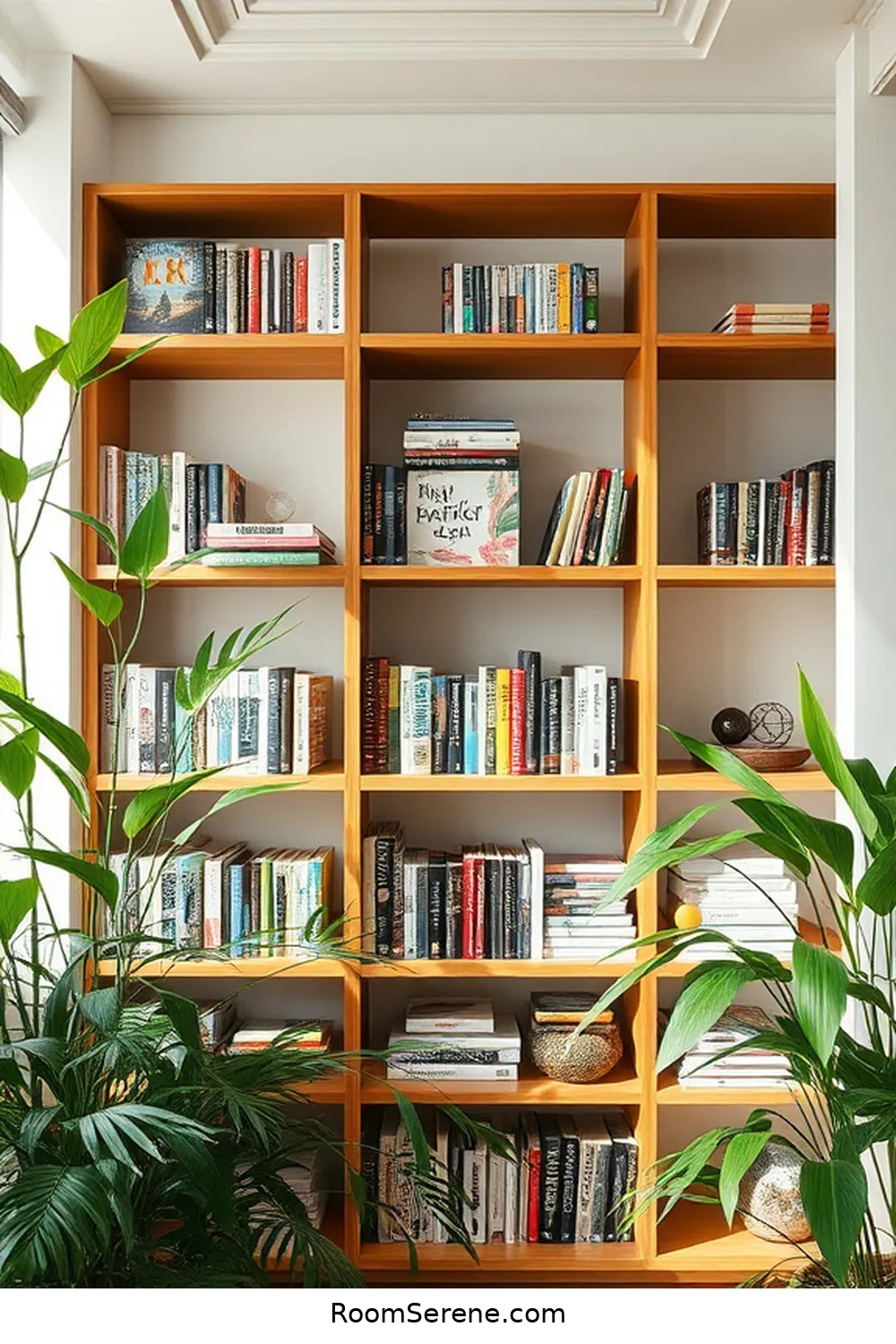
Having explored the benefits of cotton organizers, it’s clear that sustainable materials can enhance library storage in various forms. One such option is bamboo shelving, which I find both aesthetically pleasing and practical. Bamboo is not only lightweight but also incredibly strong, making it ideal for supporting various library materials. Additionally, its rapid growth rate contributes to its sustainability, allowing for eco-friendly storage solutions.
Here’s a quick comparison of bamboo shelving features:
| Feature | Bamboo Shelving | Traditional Wood Shelving |
|---|---|---|
| Sustainability | High | Moderate |
| Weight | Lightweight | Heavier |
| Cost | Affordable | Often more expensive |
Incorporating bamboo shelving can transform your library into an organized and environmentally conscious space.
Fabric Bins and Baskets: Organizing With Natural Textiles
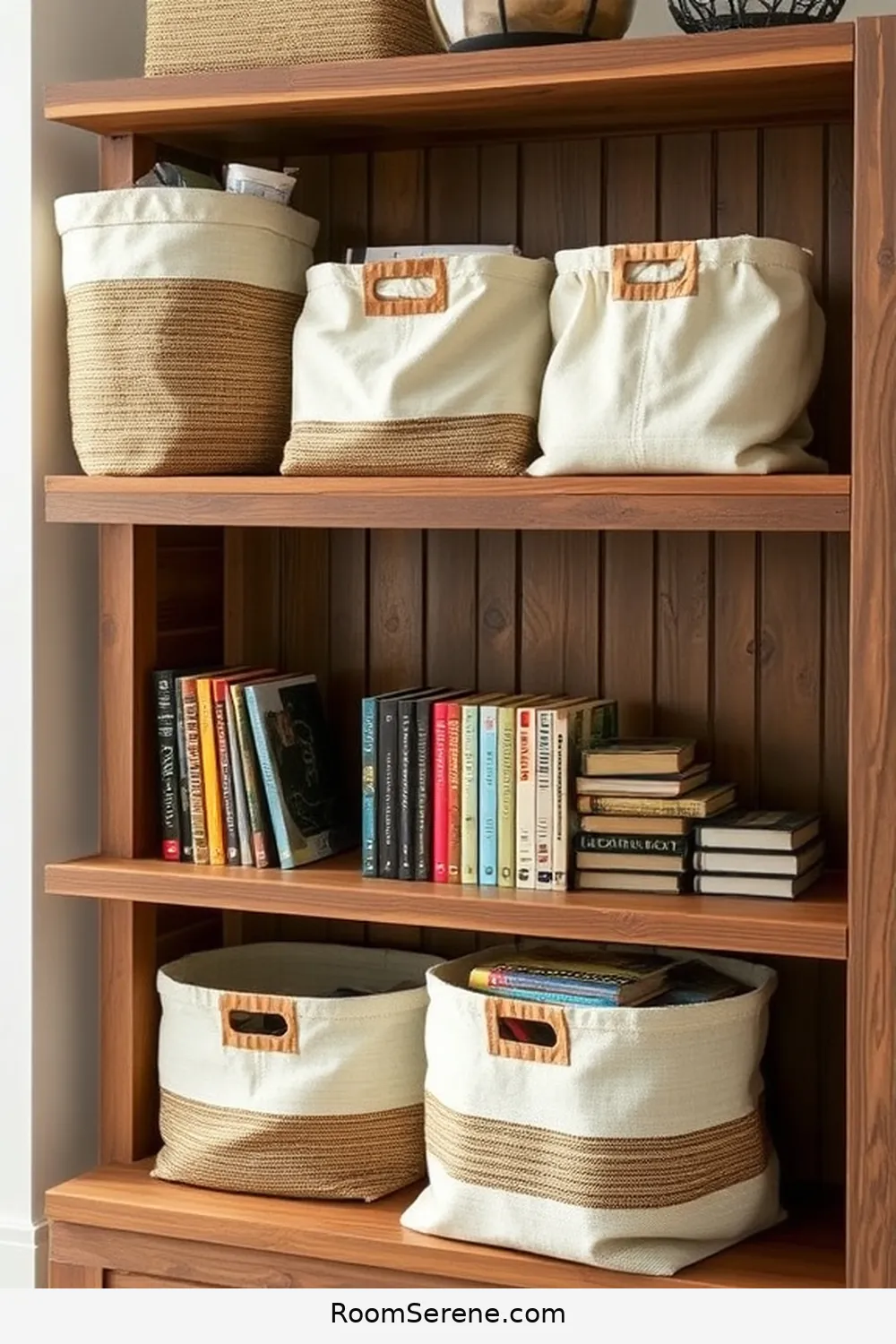
Many libraries today are embracing fabric bins and baskets made from natural textiles to enhance organization and aesthetics. I find these storage solutions ideal for keeping materials tidy while adding a touch of warmth and texture to the space.
The versatility of cotton, jute, and linen allows for a range of designs that can complement any library’s decor. Using fabric bins for categorizing books or resources not only simplifies access but also makes the environment inviting for patrons.
I appreciate how these bins are lightweight and easy to move, making them practical for reconfiguring spaces as needed. Plus, their breathable nature helps protect materials from moisture, ensuring longevity.
Reusable Drawstring Bags: An Innovative Storage Idea
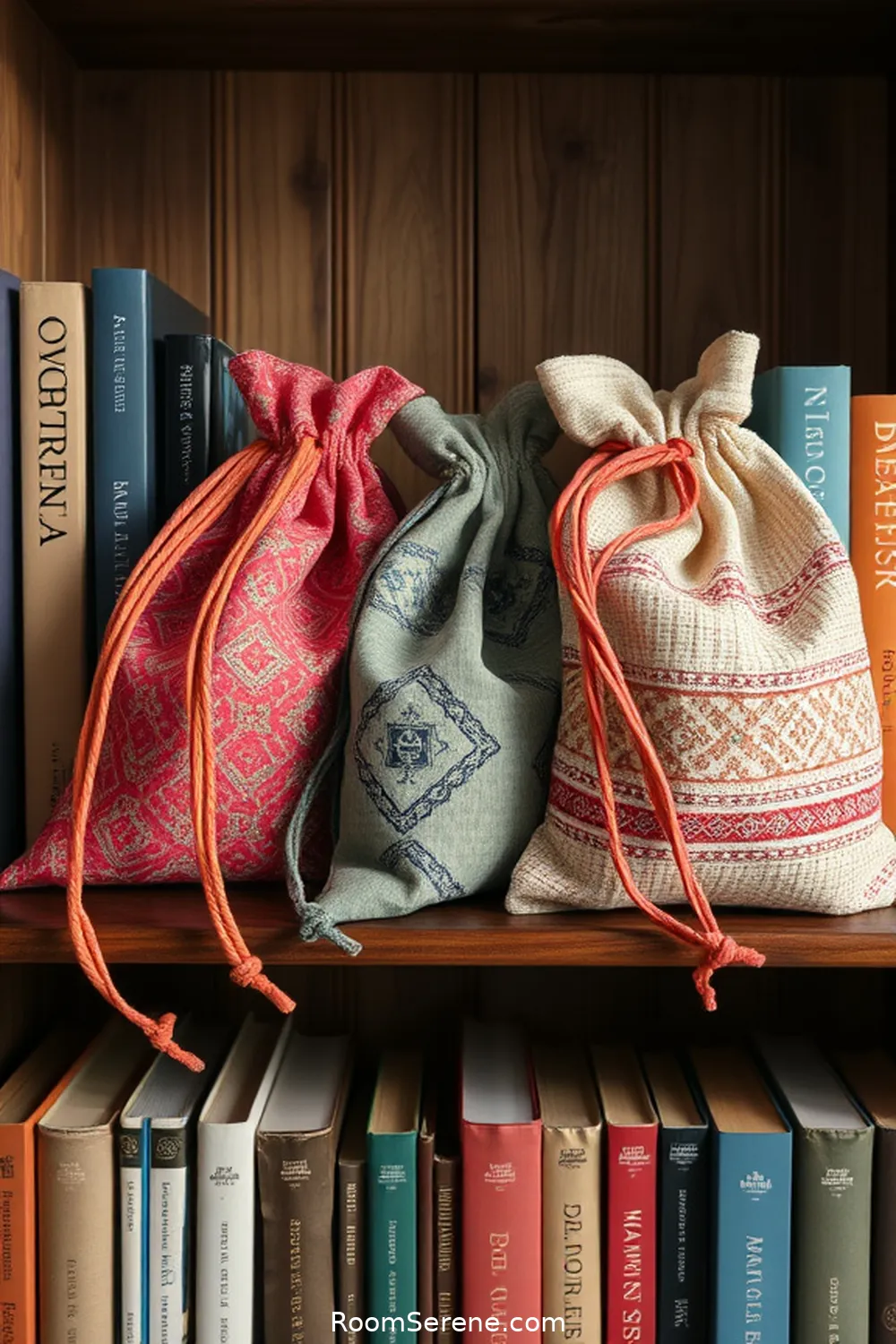
While fabric bins and baskets offer a cozy way to organize library materials, reusable drawstring bags present an innovative alternative that’s both functional and eco-friendly. I’ve found that these bags are perfect for not only storing books but also for separating different genres or categories. Their lightweight design makes them easy to carry, and the drawstring closure keeps everything secure.
Here’s a quick comparison of reusable drawstring bags:
| Feature | Benefits | Considerations |
|---|---|---|
| Material | Eco-friendly options available | Durability varies |
| Portability | Easily transportable | Limited capacity |
| Versatility | Suitable for various items | May require additional organization |
Incorporating these bags into my library setup has truly transformed my space!
Natural Fiber Labeling: Keeping Everything in Order
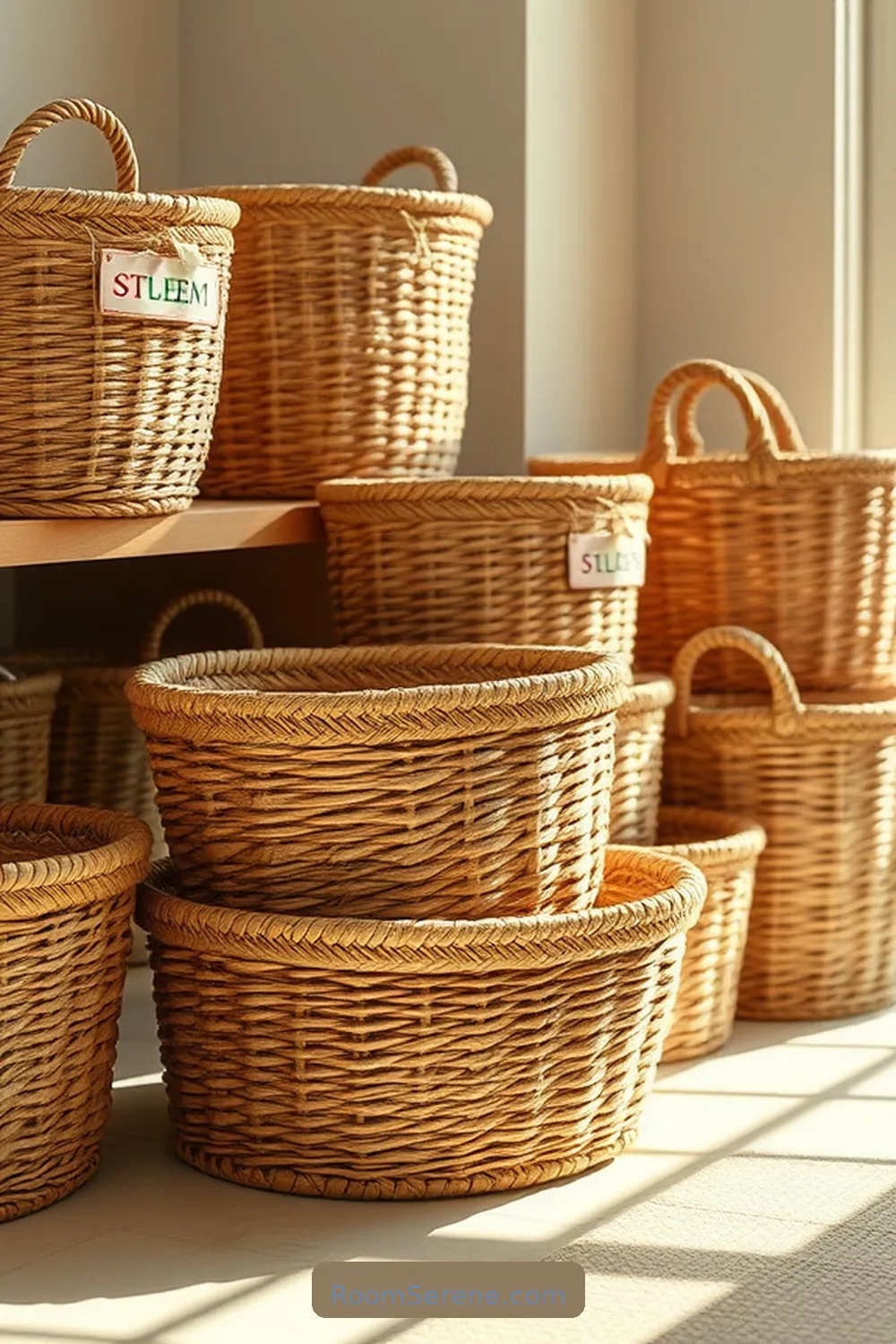
As I explored various organizational methods for my library materials, I discovered that natural fiber labeling offers a simple yet effective way to maintain order. Using materials like cotton, jute, or hemp for labels not only aligns with my eco-friendly approach but also adds a tactile quality that enhances the overall aesthetic.
I prefer to write on these labels using non-toxic inks, ensuring that they’re both durable and visually appealing. To keep things consistent, I categorize my library materials—fiction, non-fiction, and reference—using distinct colors for each label type.
This color-coding system streamlines the retrieval process, allowing me to find what I need quickly. By incorporating natural fiber labeling, I’ve transformed my organizational experience, making it efficient and enjoyable.
Creative DIY Projects for Eco-Friendly Library Storage
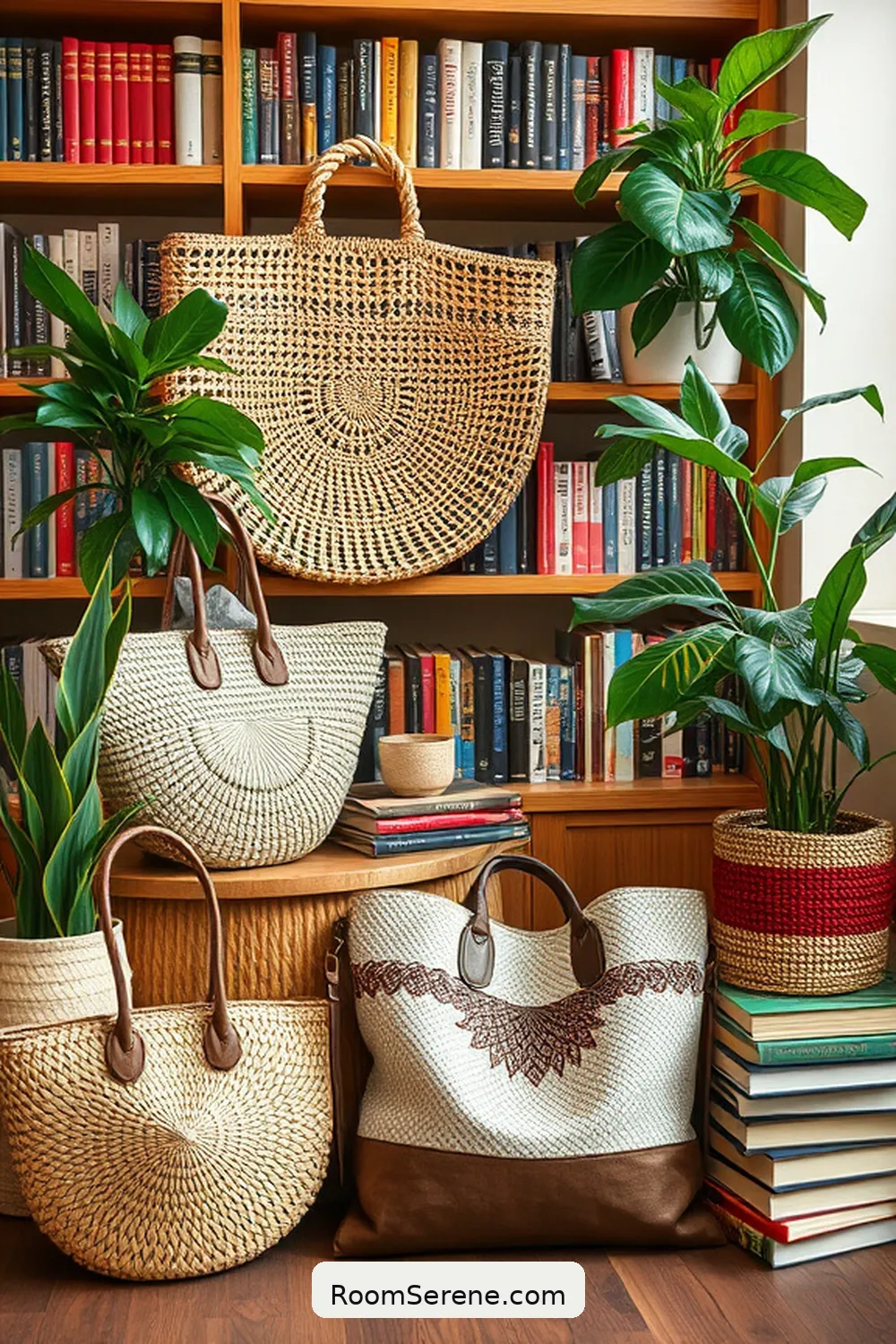
To enhance my library storage in an eco-friendly way, I’ve embraced several creative DIY projects that not only save space but also add a personal touch.
Enhancing library storage sustainably through creative DIY projects adds both functionality and a personal touch.
Here are three of my favorites:
- Upcycled Bookends: I transformed old bricks by wrapping them in jute twine. They’re sturdy and add a rustic charm to my shelves.
- Fabric Bins: Using scrap fabric, I sewed bins for organizing smaller items. These bins aren’t only functional but also visually appealing, brightening up my library.
- Mason Jar Organizers: I’ve attached mason jars to a wooden board, creating a wall-mounted storage solution for pens and bookmarks. It’s both practical and decorative.
These projects haven’t only decluttered my space but have also aligned with my eco-friendly values.
Maintaining and Caring for Natural Fiber Storage Solutions
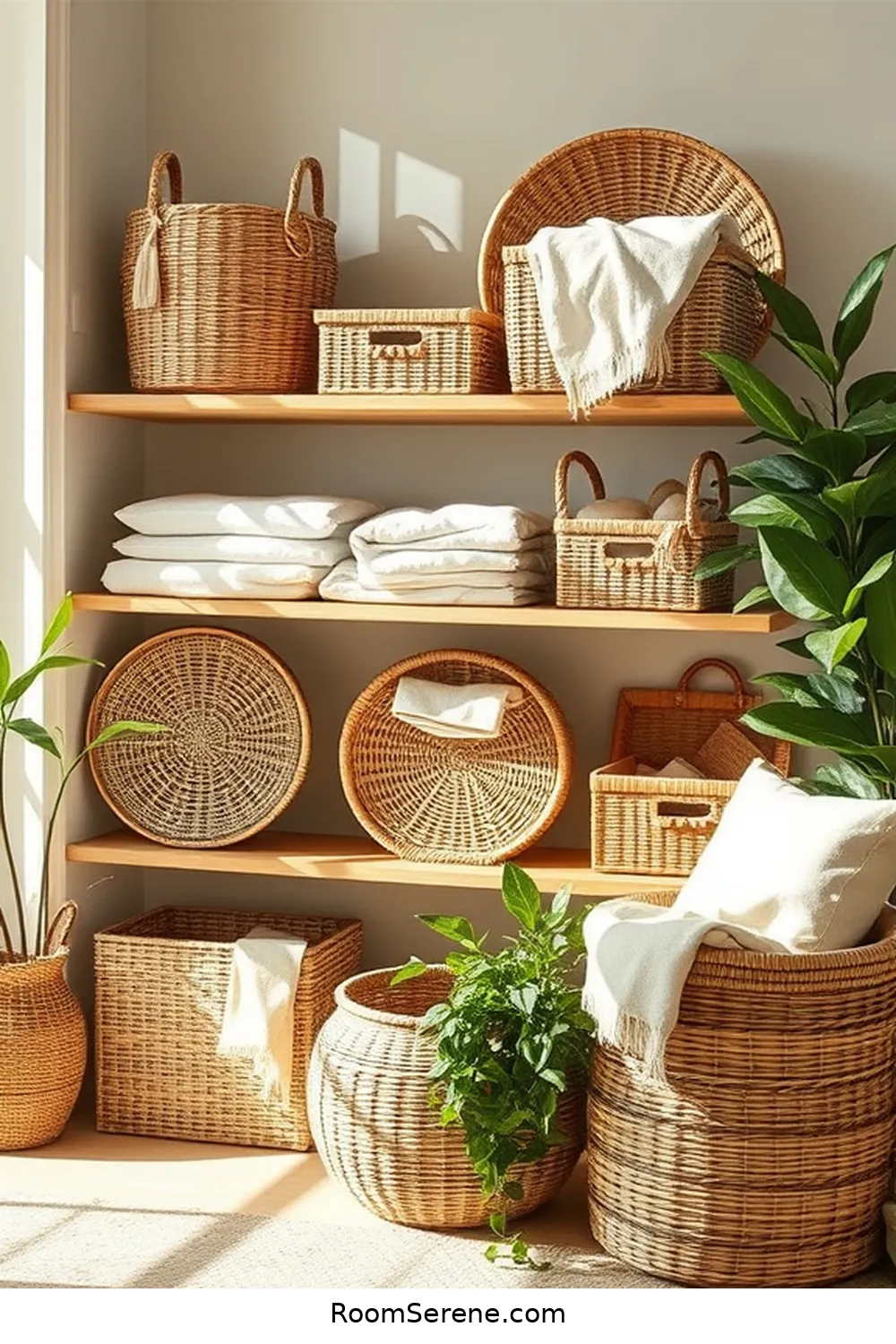
After enhancing my library with eco-friendly DIY storage solutions, I realized that maintaining these natural fiber materials is just as important as creating them.
First, I dust my woven baskets and shelves regularly with a soft cloth to prevent buildup. Next, I avoid exposing them to direct sunlight, which can cause fading and weakening.
For spills, I gently blot the area with a damp cloth, guaranteeing I don’t soak the fibers. To prevent mold, I keep the storage areas well-ventilated and dry.
If I notice any fraying, I carefully trim loose threads to maintain their appearance. By following these simple steps, I guarantee my natural fiber storage solutions remain functional and beautiful for years to come, enhancing my library’s charm.









